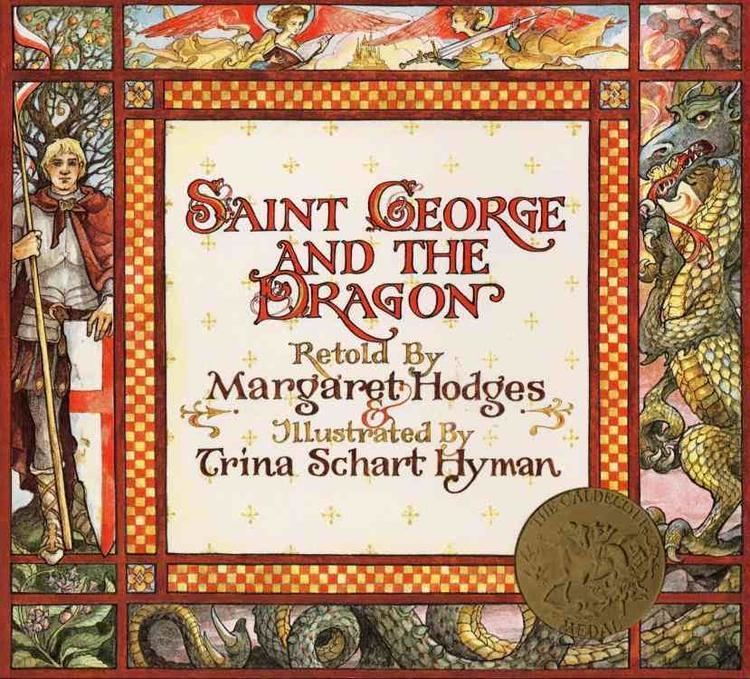9.2 /10 1 Votes9.2
5/5 Barnes & Noble Publication date August 23, 1984 ISBN 978-0-316-36789-9 LC Class PZ8.1.H69 Sai 1984 Genre Picture book Publisher Little, Brown and Company | 4.2/5 Goodreads Country United States Pages 32 OCLC 10046624 Originally published 1984 Dewey decimal 398.2 | |||||||||||||||||||||||||||||||||
 | ||||||||||||||||||||||||||||||||||
Similar Trina Schart Hyman books, Caldecott Medal winners, Picture books | ||||||||||||||||||||||||||||||||||
Saint George and the Dragon is a book written by Margaret Hodges and illustrated by Trina Schart Hyman. Released by Little, Brown, it was the recipient of the Caldecott Medal for illustration in 1984. The text is adapted from Edmund Spenser's epic poem The Faerie Queene.
Contents
Description
Saint George and The Dragon is a small book measuring 9 x 0.1 x 10.1 inches, weighing 5.6 ounces, and is 32 pages long.
Plot
This story begins with a nameless knight riding around the plain who has never been to battle. Despite this the Queene of Faeries sends him to fight a dragon who has been terrorizing their land. He travels with Una the princess of the land. On his way to the dragon the knight meets an old hermit on top of a hill who explains to him his English heritage and tells him his name is George. George meets the dragon laying down as if it was a hill itself. The dragon sees his sword and prepares for battle. After a hard fought battle George eventually emerges triumphant and slays the dragon. The king, promising Una to whomever slays the dragon, fulfills his promise and marries George and Una. Although all is well in the land George still fights other battles for the Queene of Faeries and through these battles George becomes Saint George.
Characters
History
The legend which was developed during the crusades is about George a man who lived in 3rd century Rome in the area we call Libya today. George was an Army Commander during the persecution of Christianity under Roman emperor Diocletian. George refused to prosecute Christians and was tortured and eventually beheaded. He became known as Saint George when Christian Roman Emperor Constantine devoted a church to him.
Themes
Revelation 12:9 in the Bible describes a great dragon who managed to deceive the whole world and was cast out. The dragon in the story symbolizes the Devil and how the power of Christ is what was necessary to put it away once and for all. In the Bible story George comes across a town of pagans who have been giving offerings to the dragon. He slays the dragon and the people of the town abandon their paganism and adopt Christianity. The Red Cross on his armor is meant to invoke Biblical symbolism in the mind of the readers.
Critical reception
Goodreads.com calls Saint George and the Dragon "the perfect way to introduce a classic tale to a whole new generation of readers." Steve Barancik of "The Best Children's Books" says "St. George appears scratched. The dragon loses some bloody appendages. Thus, make your own decisions about sharing the book with younger children." The Catholic Information Center calls Saint George and the Dragon "truly marvelous and appropriate for girls and boys of all ages." "The Illustrations are worth the admission alone." This adaptation of The Faerie Queen features illustrations that "glitter with color and mesmerizing details," said PW. Kirkus Reviews calls Saint George and the Dragon "a strong narrative, with stagy decor and pictures."
